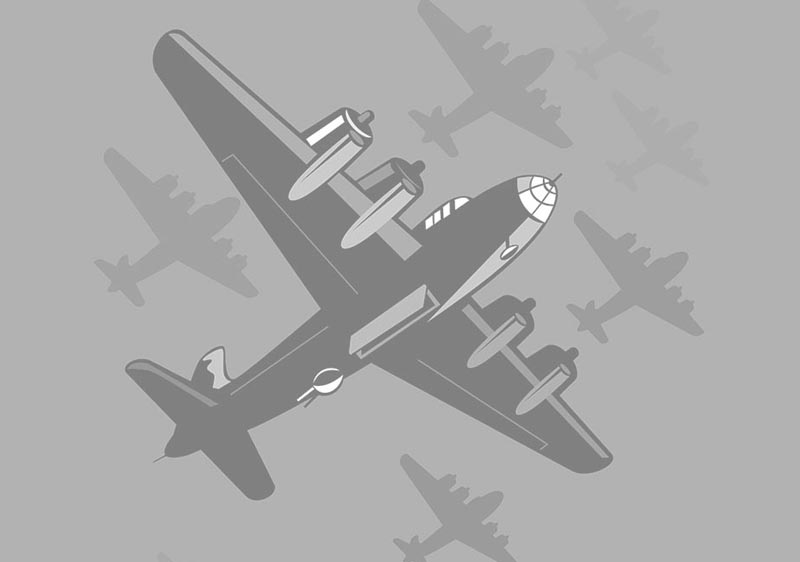
44-6993
Delivered Oklahoma City 8/1/45; Boca Raton 16/2/45; Hunter 17/3/45; Grenier 28/3/45; Assigned 482BG Alconbury 1/4/45; transferred 338BS/96BG Snetterton 1/4/45; Salvaged 9AF Germany 6/11/46.
 English
English Deutsch
DeutschThe B-17G was the latst production model of the “Flying Fortress” and was manufactured in the greates numbers.
![B-17G mit Kinnturm // Wikipedia Commons [Public Domain]](https://b17flyingfortress.de/cms/wp-content/uploads/2015/12/B-17G_Nose_in_Detail-762x1024.jpg)
B-17G mit Kinnturm // Wikipedia Commons [Public Domain]
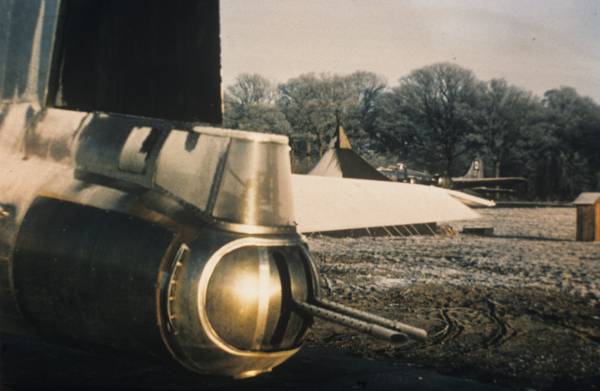
Chenyenne-Turret // http://www.americanairmuseum.com/media/4381 // CC-BY-NC 3.0
However, the new model B-17 also experienced its own operating difficulties. When fired at maximum elevation, the chin turret guns had a tendency to crack the plexiglass nose; a problem was solved by fitting blast barrels to each gun. The oil cooler regulator often failed to operate and could result in complete engine seizure. The ability to feather the propeller blades, in event of engine failture, was lost in the B-17G because the standpipe that held back sufficient oil to work the feathering tank was sacrificed in the quest for a lighter aircraft. This was a major design error and meant that, by the winter of 1943, the lack of feathering was a major reason for bomber loss. Urgent request were made by Groups for special modifications kits but it was only in September 1944 that B-17G’s arrived with these modifications built-in.
Another serious problem on the B-17G was the lack of an engine fire extinguisher system. Designers had believed that it was ineffective so had left it out of the new model. In reality, the system had worked well and it was requested by Bomber Groups that it be re-introduced as soon as possible.
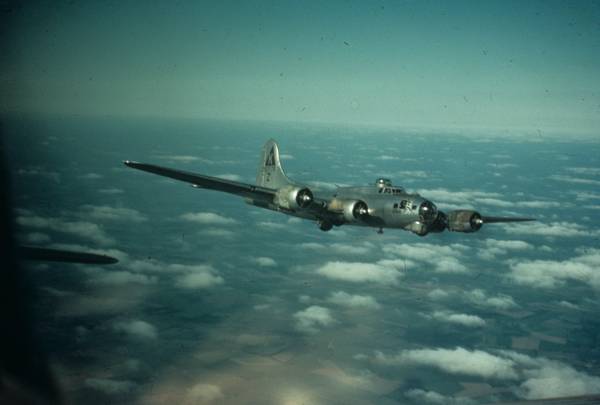
B-17G im Flug // http://www.americanairmuseum.com/media/2433 // CC-BY-NC 3.0
The B-17G was still tail heavy with the same centre of gravity problems as earlier models. However, by May 1944, when long-range fighter esort was effective defensive protection, gunners were not as busy as before and it was decided that one waist gunner be dispensed with. The radio romm gun, the least used in action, was got also rid of and the quanity of ammunition carried reduced. All these measures brought the centre of gravity nearer th a more acceptable position. In the las month of the war, when there was little enemy fighter activity, some Combat Wings flew without waist guns, ball turrets or chin turrets. Operational reports revealed an estimated 25mph increase in airspeed with the improved streamlining. In this period of the war flak batteries were a greater hazard than fighters and unneccesary gunner armor plate was removed to be replaced with laminated steel and canvas plates called “flak curtains”.
In total, the 8th Air Force received 6,500 B-17G’s. In March 1945, it could send 2,370 of them into combat operations. At the end of the war a total 1,301 B-17G’s had been shot down or reported missing in action.

Delivered Oklahoma City 8/1/45; Boca Raton 16/2/45; Hunter 17/3/45; Grenier 28/3/45; Assigned 482BG Alconbury 1/4/45; transferred 338BS/96BG Snetterton 1/4/45; Salvaged 9AF Germany 6/11/46.

Delivered Dallas 2/9/44; Dayton 8/9/44; Hunter 9/12/44; Dow Fd 2/1/45; Assigned 337BS/96BG [AW-H] Snetterton 5/1/45; RetUS, Reconstruction Finance Corporation (sold for scrap metal in USA) Walnut Ridge 4/1/46.

Delivered Cheyenne 22/11/43; La Guardia 21/12/43; Presque Is 23/12/43; slated 379BG, Assigned 358BS/303BG [VK-D] Molesworth 18/1/44; detailed Aschersleben 22/2/44 with John Stuermer, Co-pilot: Chas Reynolds, Navigator: Bill Tielman, Bombardier: Clyde Newman, Flight engineer/top turret gunner: Dave Harris, Radio Operator: Ed Murray, Ball turret gunner: Joe Stark, Waist gunner: Marv Carroll,Tail gunner: Marv Collins (9 Killed in Action); Waist gunner: Dave Miller (Returned to Duty); on assembly collided with 42-31516 shearing off tail, crashed Irthlingborough, Nthnts, UK; sal 24/2/44. HELL’S ANGELS II.
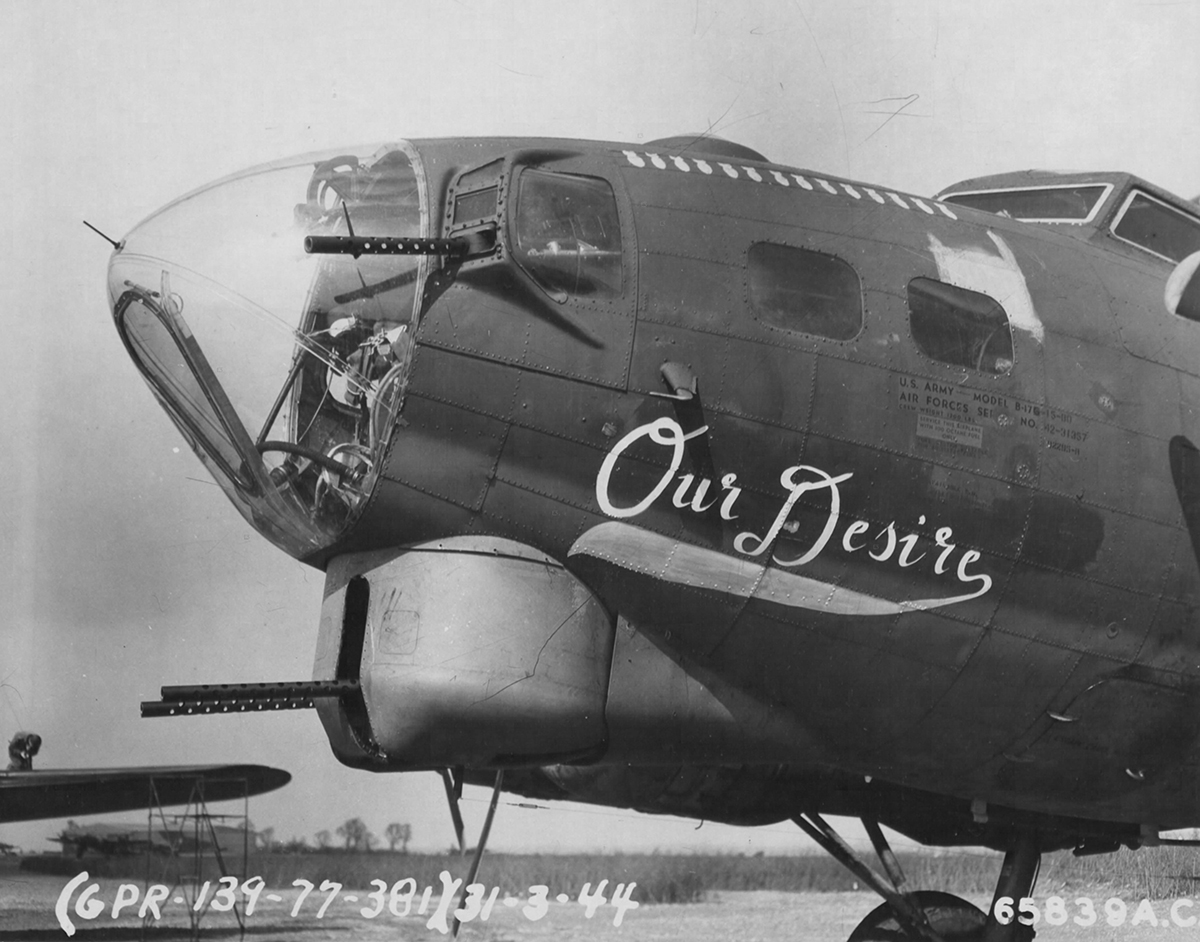
Delivered Cheyenne 25/10/43; Gr Island 3/11/43; Romulus 12/11/43; Assigned: 535BS/381BG [MS-N] Ridgewell 11/12/43; on mission to Achmer 21/2/44 Pilot: George McIntosh; Navigator: Allen Bergreen, Bombardier: Bill Piekarski baled out and became POWs; MIA {10m} Schweinfurt 13/4/44 w/Jim Mullane, Co-Pilot: Pax Sherwood, n-Pat O’Phelan, b-John Kirby, Engineer / Top Turret Gunner: Ed Stahlke, Radio Operator: Bob Kettlety, Ball Turret Gunner: Thaddeus Tarczynski, Waist Gunner: Lew Sparrow, Tail Gunner: Frank Troxler (9POW); flak ko’d #3, lost altitude and another engine caught fire, eventually ship exploded and crashed Klosterkumbd, four miles N of Simmern/Hunsruck, 22 miles S of Koblenz, Germany. MACR 3865. OUR DESIRE.

Delivered Cheyenne 2/3/44; Kansas City 14/3/44; Dyersburg 20/3/44; W/O 22/4/44.

Delivered Tulsa 22/2/44; Hunter 4/3/44; with Frank Cunningham force landed Orlando 11/3/44; Dow Fd 24/6/44; Assigned 341BS/97BG Amendola 2/7/44; Missing in Action Regensburg 28/12/44 with 2Lt Joseph M Neider, 2Lt John S Aldridge, 2Lt Abe Schamis, F/O Gerard A Baranowski, T/Sgt John F Huf Jr, Sgt William E Richards, S/Sgt Donald J Meckle, Sgt Edward T Gorman, S/Sgt Paul W Ruple, S/Sgt Roy Blackburn; engine mech fault lagged behind formation, crashed Peelton; 10 x POW MACR 10876.

Delivered Kearney 27/7/44; Grenier 8/8/44; Assigned 340BS/97BG Amendola 22/8/44; transferred 463BG Celone; Returned to the USA Hunter 25/6/45; Sth Plains 27/6/45; Reconstruction Finance Corporation (sold for scrap metal in USA) Kingman 10/12/45.

Delivered Cheyenne 26/4/44; with ? force landed Wyo 1/5/44; Lowry 10/5/44; Cheyenne 16/6/44; Kearney 27/6/44; Dow Fd 7/7/44; Assigned 511BS/351BG [DS-G] Polebrook 17/7/44; Missing in Action {4m} Brandenburg 6/8/44 with Wilson Strange, Navigator: Frank Booth, Ed Prokop (3 Killed in Action); Co-pilot: George Pappas, Bombardier: Otis Smith, Flight engineer/top turret gunner: Ken Barlow, Radio Operator: Ross Morell, Ball turret gunner: Lionel Zeigler,Tail gunner: Don Killoran (6 Prisoner of War); flak set fire to bomb bay, ship exploded, crashed Treuenbrietzen, SW of Berlin; Missing Air Crew Report 7587.

Delivered Denver 23/12/43; Gr Island 28/12/43; Boca Raton 20/1/44, 3501 BU Boca Raton 28/11/44; 3704 BU Keesler 15/1/45; 3704 BU Boca Raton 1/8/45; Reconstruction Finance Corporation (sold for scrap metal in USA) Kingman 8/12/45.
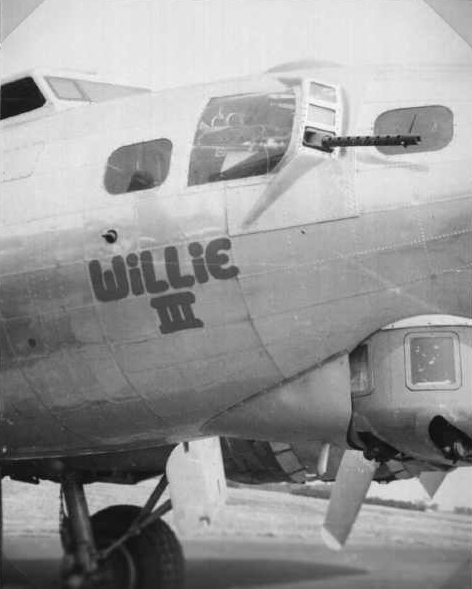
Delivered Cheyenne 30/4/44; Gt Falls 3/5/44; Kearney 3/6/44; Grenier 18/6/44; Assigned 750BS/457BG [J] Glatton 29/6/44; Missing in Action Merseburg 12/12/44 with Montell Higgins (Killed in Action); Co-pilot: Bill Bell, Navigator: John McCaughan, Bombardier: Harry Harstedt, Flight engineer/top turret gunner: Frank Winder, Radio Operator: Fred Lawyer, Ball turret gunner: Phil Porter, Waist gunner: Russ Perry,Tail gunner: Bill Smigielski (9 Prisoner of War); flak, crashed Sensweiler, Ger; Missing Air Crew Report 11334. WILLIE III.
Search for B-17
Supporting
Do you like this website about the B-17 Flying Fortress? I could help you find the information you are looking for? I would be very pleased if you would support my work with PayPal Me!
B-17 Store by teespring
Masters of the Air
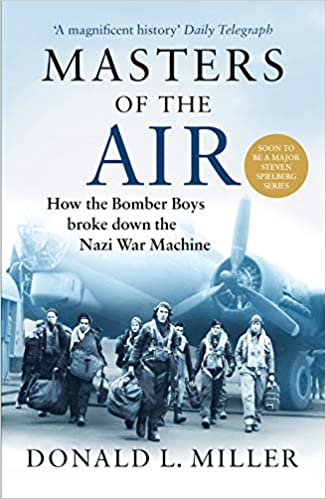 Buy on Amazon*
Buy on Amazon*
* = CommissionsEarned. As an Amazon Associate I earn from qualifying purchases.
Recent Comments
Information